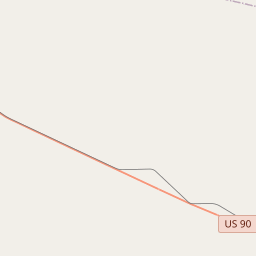Unknown Cemetery #17







Source: USGS
To address the problem of cemetery destruction and to record as many cemeteries as possible, the Texas Historical Commission offers the Historic Texas Cemetery designation.
The Historic Texas Cemetery designation was developed in 1998 to help protect historic cemeteries by recording cemetery boundaries in county deed records to alert present and future owners of land adjacent to the cemetery of its existence. Every county in Texas has at least one cemetery designated as a Historic Texas Cemetery through this program. The HTC designation is the first step toward preservation of a historic cemetery.
A cemetery is eligible for designation if it is at least 50 years old and is deemed worthy of recognition for its historical associations. The very nature of a cemetery being a landmark of a family’s or community’s presence is considered to validate the criteria of historical associations. Any individual, organization, or agency may submit a request for designation.
The state of Texas was once an independent country known as the Republic of Texas. It gained independence from Mexico in 1836 and was a separate nation until it was annexed by the United States in 1845.
During the 19th century, Presidio County played a significant role in the Texas Revolution and the Mexican-American War. Fort Leaton, a well-preserved adobe fort, served as an important staging point for both conflicts. In 1848, the Amistad Expedition, a slave rebellion, took place in the county. This event resulted in international controversy and contributed to shifting attitudes towards slavery in Texas.
In the late 19th and early 20th centuries, Presidio County experienced growth and development due to several factors. The arrival of the Southern Pacific Railroad in 1882 spurred economic activity and brought more settlers to the area. Agriculture, particularly ranching and farming, became the primary industries. The county's proximity to the Rio Grande also made it an important trade hub.
However, Presidio County faced challenges and hardships as well. The Mexican Revolution, which began in 1910, had a significant impact on the region due to its borderland location. Smuggling, violence, and instability became prevalent, affecting the county's economy and population. Today, Presidio County reflects its diverse history, with cultural influences from Native American, Spanish, Mexican, and American settlers shaping its identity.
Presidio County Timeline
This timeline provides a condensed summary of the historical journey of Presidio County, Texas.
- 1850 - Presidio County established as one of the original 36 counties of Texas
- 1854 - Fort Defiance established near Presidio to protect against Native American raids
- 1875 - Presidio County seat moved from Fort Davis to Marfa
- 1882 - Marfa and Presidio connected by the Galveston, Harrisburg and San Antonio Railway
- 1884 - The Chinati Mountains declared a federal game reserve, later becoming Chinati Mountains State Natural Area
- 1933 - Marfa becomes a major cattle-shipping center with the construction of the Presidio County Courthouse
- 1998 - Marfa becomes known as an arts destination, after the artist Donald Judd establishes the Chinati Foundation